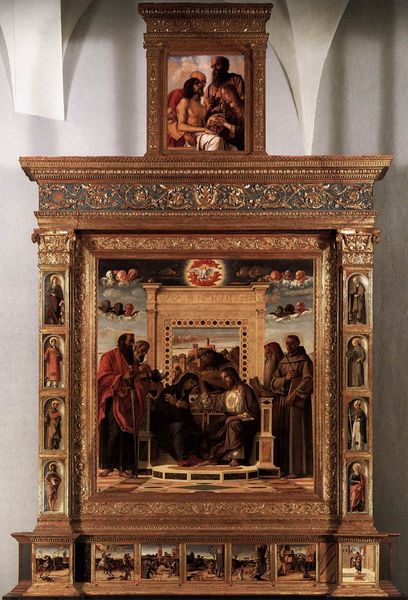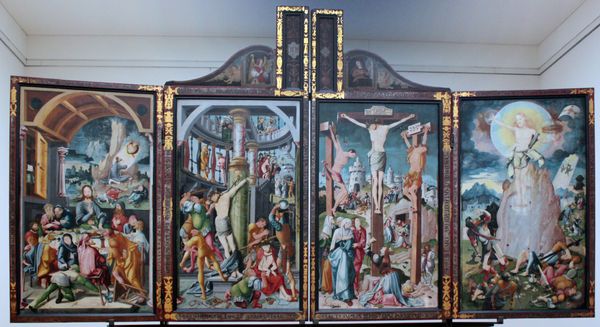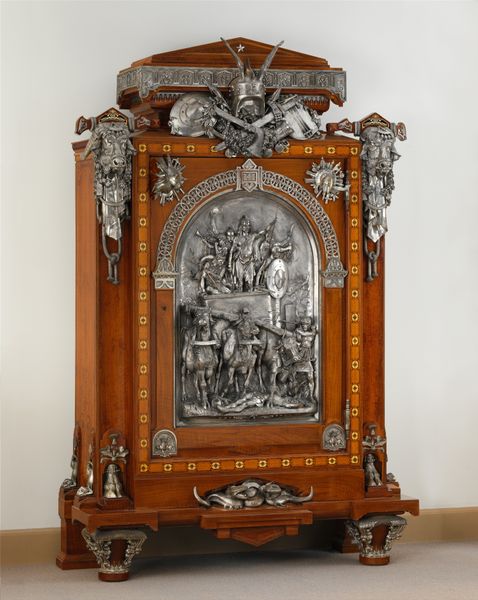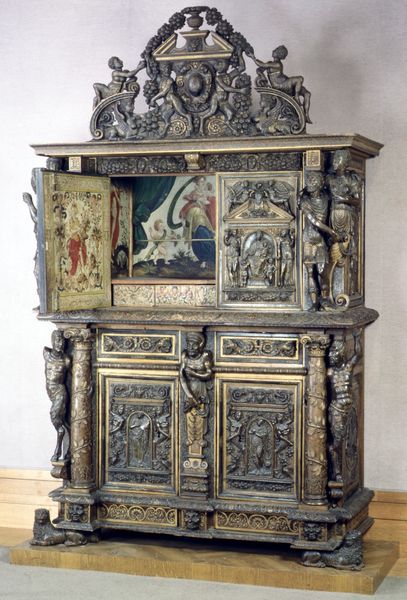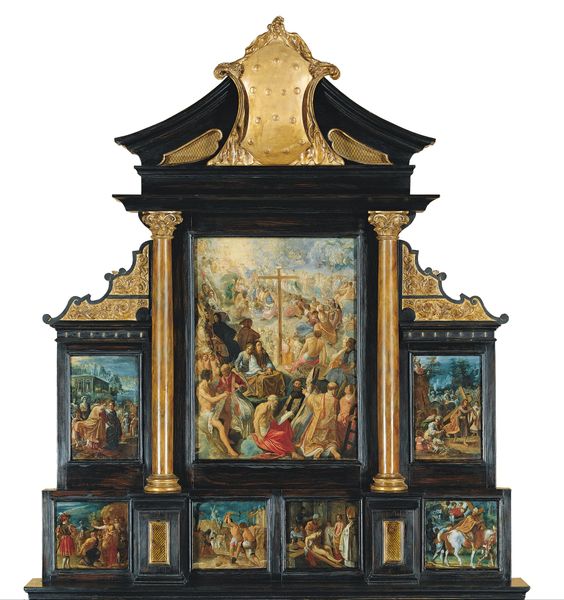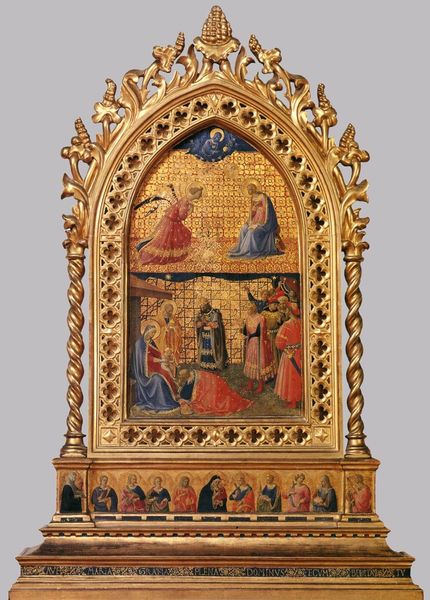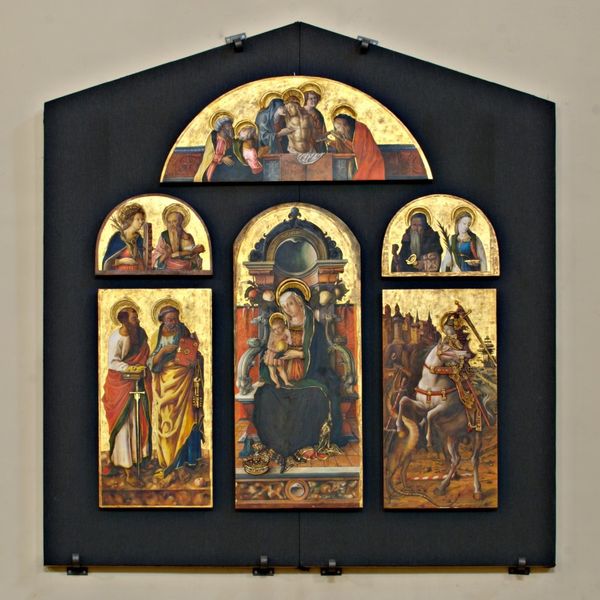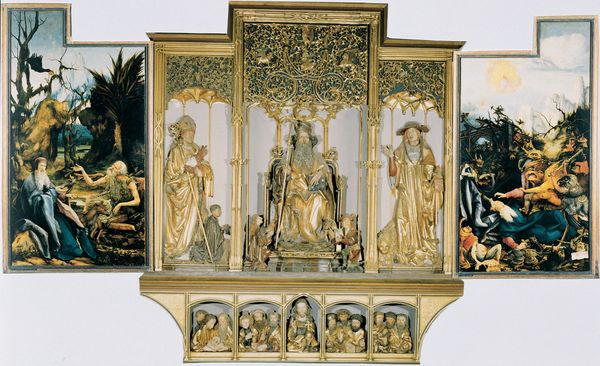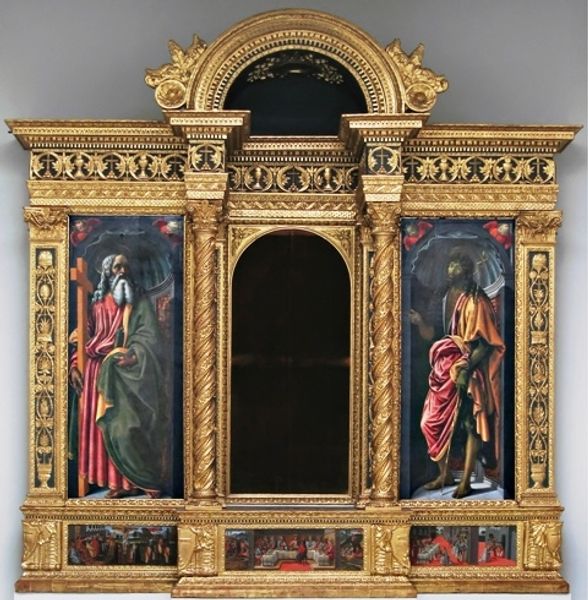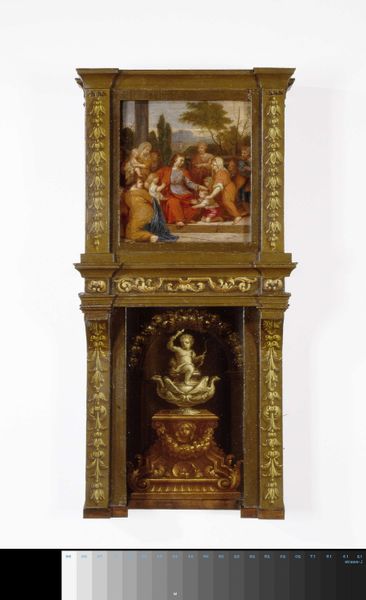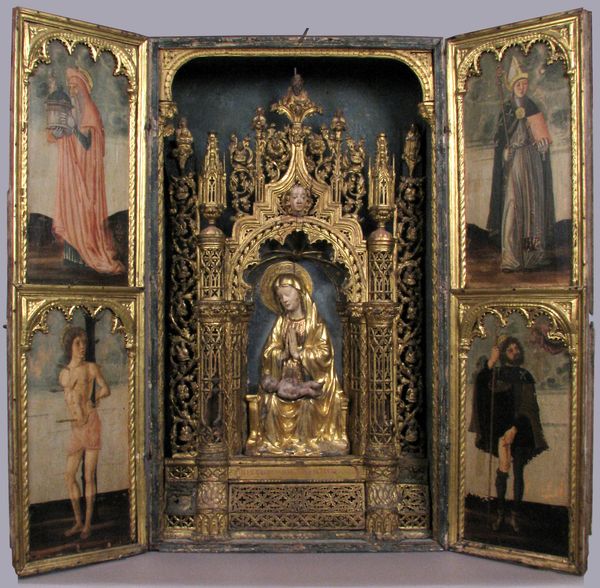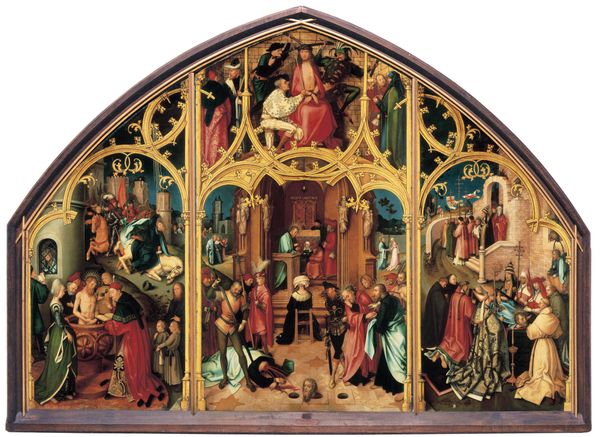
panel, tempera, painting
#
portrait
#
medieval
#
panel
#
narrative-art
#
tempera
#
painting
#
landscape
#
holy-places
#
figuration
#
cross
#
history-painting
#
northern-renaissance
#
miniature
Copyright: Public domain
Curator: Let's discuss the Herrenberg Altarpiece, a work created around 1520 by Jerg Ratgeb. It's executed in tempera on panel, and what strikes me immediately is the intense narrative complexity packed into a relatively small space. Editor: It's emotionally quite reserved at first glance. The subdued palette lends a certain somber air, and the multitude of figures seem somewhat self-contained within their own narratives, even though they share the same pictorial plane. The scale of everything seems miniature-like, as though everything that is shown to the audience has symbolic meaning behind it. Curator: Precisely! It reflects the complex social and religious landscape of the time. Ratgeb was executed for his involvement in the German Peasants' War just a few years after completing this altarpiece. His art often reflected the turbulent social and political atmosphere. Editor: Do you think, looking at the cross and other elements on this panel, the altarpiece would provide the viewer a sense of spiritual connectivity through the representation of religious symbols and icons from the period, since this would fall into the period when Protestantism started taking root? Curator: That's a fascinating point, given the emerging Protestant movement. I see it more as a reflection on power structures and challenges to those structures. It acknowledges the power of spiritual iconography while possibly critiquing established authority, which eventually becomes evident from Ratgeb's decisions during the war. The painting serves more to highlight tensions rather than solve them. Editor: Yet, even in these tensions, Ratgeb adopts such traditional and inherited visual devices. These scenes are embedded with generations of meaning for the viewer. He clearly intended to utilize the potency of certain symbols such as the face of Jesus in order to speak effectively to an audience regardless of belief, no? Curator: Certainly, he taps into that inherited visual language. But perhaps uses that power to also pose uncomfortable questions. This piece becomes especially intriguing once we read it through the lens of his political activity later in life, because it provides us with an understanding that while symbols unite and endure over centuries, they also are consistently contested in the space of power and meaning making. Editor: It does present a rich visual tapestry ripe with multiple interpretations and contradictions. It truly exemplifies the complexities of the era. Curator: A very apt summation. Its historical context offers an intriguing look into not just the world but Ratgeb's life that can contextualize his activism with symbols he chooses to incorporate.
Comments
No comments
Be the first to comment and join the conversation on the ultimate creative platform.

